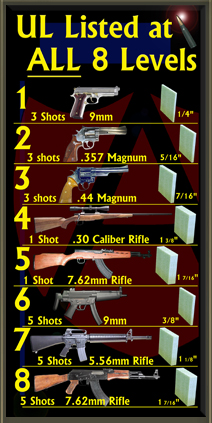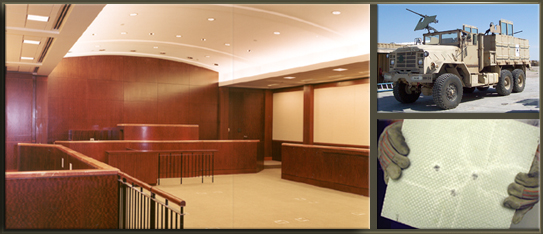
Why Fiberglass?
The ArmorCore™ product line developed by Waco Composites, Ltd. utilizes layers of woven roving fiberglass in conjunction with resin, which is cured with heat and pressure. E-glass is the type of fiberglass applied in ArmorCore panels, though we may produce panels with S-2 glass or Kevlar according to our customer’s requests. Fiberglass has proven to be a very successful, economic, and well-rounded solution for ballistic resistive materials.
Durability and flexibility are two important properties that are balanced well in fiberglass for ballistic applications. The ArmorCore panels actually absorb the bullet, blast pressure, and/or other shrapnel or projectile that each panel is intended to stop. The fiberglass strength and flex combined with a process known as “ply-delamination” allow for this energy absorption to occur. Delamination is the process whereby the multiple layers or “plies” in the panel separate in order to diffuse the energy at the moment of impact. Kevlar ballistic resistive products also absorb the bullets/projectiles, but are much more costly systems compared to fiberglass. Steel bullet resistant products are available as well, but tend to ricochet the projectiles instead of absorbing them. This ricochetting effect can be hazardous in architectural armoring because the projectile is still a threat to people or property in the vicinity. If spalling occurs when the steel is struck, the particals (spall) discharged off the back side can be dangreous as well. Steel systems are also much heavier and are more difficult to install (special cutting and welding tools and experience are required). Steel prices and availability also flucuate more drastically.
Not only are the ArmorCore bullet resistant fiberglass panels relatively lightweight, but other qualities for the ease of installation are inherent. These panels can be cut and drilled in the field with standard construction tools. Self-tapping drywall screws or Polyureathane Construction Adhesive can be used to apply the panels. ArmorCore Panels can easily be covered with drywall, wood, or various laminates. They can be painted, coated, or textured. The WaterJet Cutters at Waco Composites are also available for factory cutting to any desired size or 2-dimensional design.
